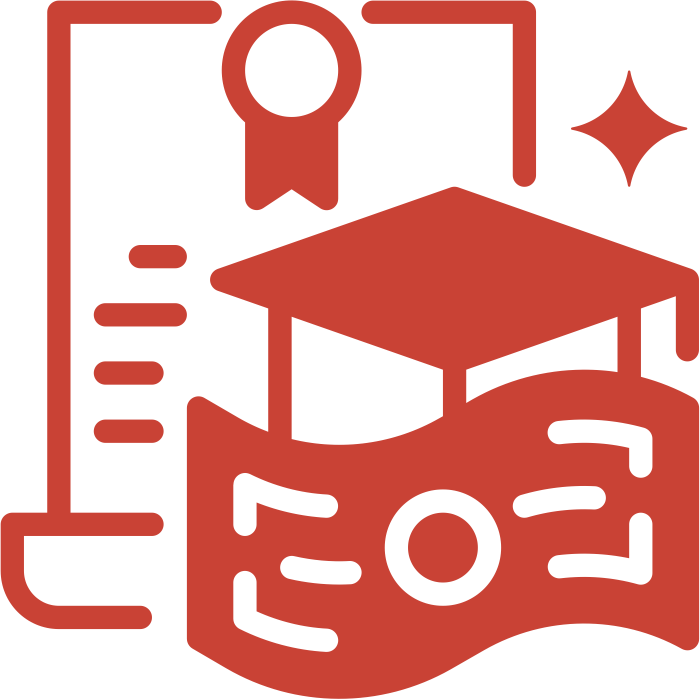Technology has become an integral part of our educational landscape, significantly transforming the way students learn and teachers teach.
The benefits of technology in school are manifold. It opens up new horizons of interactive learning, enabling students to grasp complex concepts through engaging digital tools.
At Aditya Birla World Academy, an international school in Mumbai we are at the forefront of integrating cutting-edge technology to enhance educational experiences, preparing our students to thrive in a rapidly changing world.
However, as with any major shift, this integration comes with its own set of challenges and considerations. In this blog post, we aim to analyze the role of technology in education, highlighting how it reshapes the learning and teaching processes.
We'll explore the myriad benefits that technology in school brings to our classrooms, from personalized learning experiences to global connectivity. Alongside, we'll also address potential drawbacks, such as the digital divide and screen dependency.
The Evolution of Classroom Technology
The journey of technology in school environments has been nothing short of revolutionary. In its early days, the most advanced technology in classrooms was perhaps the overhead projector or the bulky desktop computers that lined the walls of computer labs.
Fast forward to today, and the landscape of technology in school has transformed dramatically, offering a myriad of benefits to both educators and students. These benefits are evident in the way these tools have enhanced the educational experience.
Modern classrooms are equipped with smartboards, individual laptops or tablets, and high-speed internet access, making the learning process more interactive and engaging.
Interactive software allows for dynamic teaching methods, catering to various learning styles. For example, visual learners can benefit from engaging videos and graphical presentations, while kinesthetic learners can interact with touch-screen technology.
Moreover, the integration of technology in schools has paved the way for personalized learning experiences. Educational apps and platforms can adapt to individual student’s pace and style of learning, offering customized support and feedback.
The evolution of classroom technology, from chalkboards to interactive digital boards, underscores a fundamental shift in educational paradigms.
It signifies a move towards an environment where the benefits of technology in school are leveraged to create a more immersive, personalized, and accessible education for every student.
The Smart Way to Learn Through Innovative Educational Technologies
In today’s fast-paced educational landscape, the role of technology in learning has become increasingly pivotal. This evolution is redefining the traditional classroom, turning it into a hub of interactive and personalized learning experiences.
At Aditya Birla World Academy, the best international school in Mumbai, we are witnessing a dynamic shift in how education is imparted, thanks to innovative educational technologies.
One of the most significant impacts of technology in education is the facilitation of a more engaging and interactive learning environment. Tools like virtual reality (VR) and augmented reality (AR) are being integrated into the curriculum to bring complex concepts to life.
For instance, a biology lesson is no longer confined to the pages of a textbook; instead, students can virtually explore the human body, enhancing their understanding and retention of the subject matter.
Furthermore, the use of learning management systems and online resources in schools enables students to access a wealth of information beyond the classroom walls. This accessibility encourages self-paced learning and fosters a culture of independent research.
Tech Tools in Education: Boon or Bane?
The integration of technology in educational settings has sparked a debate on its efficacy and impact. While technology in education offers numerous benefits, it also brings challenges that need to be addressed to maximize its positive impact.
Pros of Tech Tools in Education:
- Enhanced Engagement:
- Personalised Learning:
- Access to Information:
- Skill Development:
- Collaborative Learning:
Interactive tech tools make learning more engaging, helping students absorb and retain information better.
Technology allows for tailored educational experiences, catering to individual learning styles and paces.
The internet and digital libraries provide vast resources, expanding the scope of learning beyond textbooks.
Regular use of technology in school prepares students with essential digital skills needed in the modern workforce.
Tools like online forums and collaborative software promote teamwork and communication skills among students.
Cons of Tech Tools in Education:
- Digital Divide:
- Distractions and Dependency:
- Cybersecurity Risks:
- Cost and Maintenance:
- Teacher Training:
Not all students have equal access to technology, leading to disparities in learning opportunities.
Over-reliance on tech tools can lead to distractions and reduce students' ability to engage in traditional learning methods.
Increased use of online platforms in education can expose students to cyber threats and privacy issues.
Implementing and maintaining state-of-the-art technology can be costly for educational institutions.
Effective integration of technology requires teachers to be adequately trained, which can be a challenge.
Cybersecurity in Schools: Protecting Digital Learning Spaces
In the age where technology permeates every aspect of education, cybersecurity in an international school in Mumbai has become a paramount concern. Protecting digital learning spaces is crucial to ensure a safe educational environment for students and faculty.
By incorporating the following measures, schools can create a fortified digital learning environment, where the focus remains on education without the looming threats of cyber risks.
Strategies:
- Robust Security Protocols:
- Regular Software Updates:
- Secure Wi-Fi Networks:
Implementing strong security measures like firewalls, antivirus software, and intrusion detection systems to safeguard school networks.
Ensuring all software and systems are up-to-date to protect against the latest cyber threats.
Using encrypted and password-protected Wi-Fi networks to prevent unauthorized access.
Tips:
- Educate Students and Staff:
- Control Access:
- Data Backup:
- Monitor Network Activity:
- Encourage Responsible Use:
Regular training on cybersecurity best practices, like recognizing phishing emails and secure password creation.
Limiting access to sensitive information and systems to authorized personnel only.
Regularly backing up important data to prevent loss in case of a cyber-attack.
Keeping a watch on network activity to quickly identify and respond to any unusual actions or potential breaches.
Promoting a culture of responsibility and awareness regarding the use of technology and digital resources.
Bottomline
The integration of these technologies aligns with the ethos of the best international school in Mumbai, which strives to prepare students for a globalized world.
By embracing these technological advances, schools are not only enhancing the learning experience but also equipping students with essential 21st-century skills, like digital literacy, problem-solving, and adaptability.
In essence, technology in education is not just about facilitating learning; it's about shaping future-ready individuals.

 Online Admission
Online Admission Scholarship Programme
Scholarship Programme University Counselling
University Counselling Leadership
Leadership Voices at ABWA
Voices at ABWA